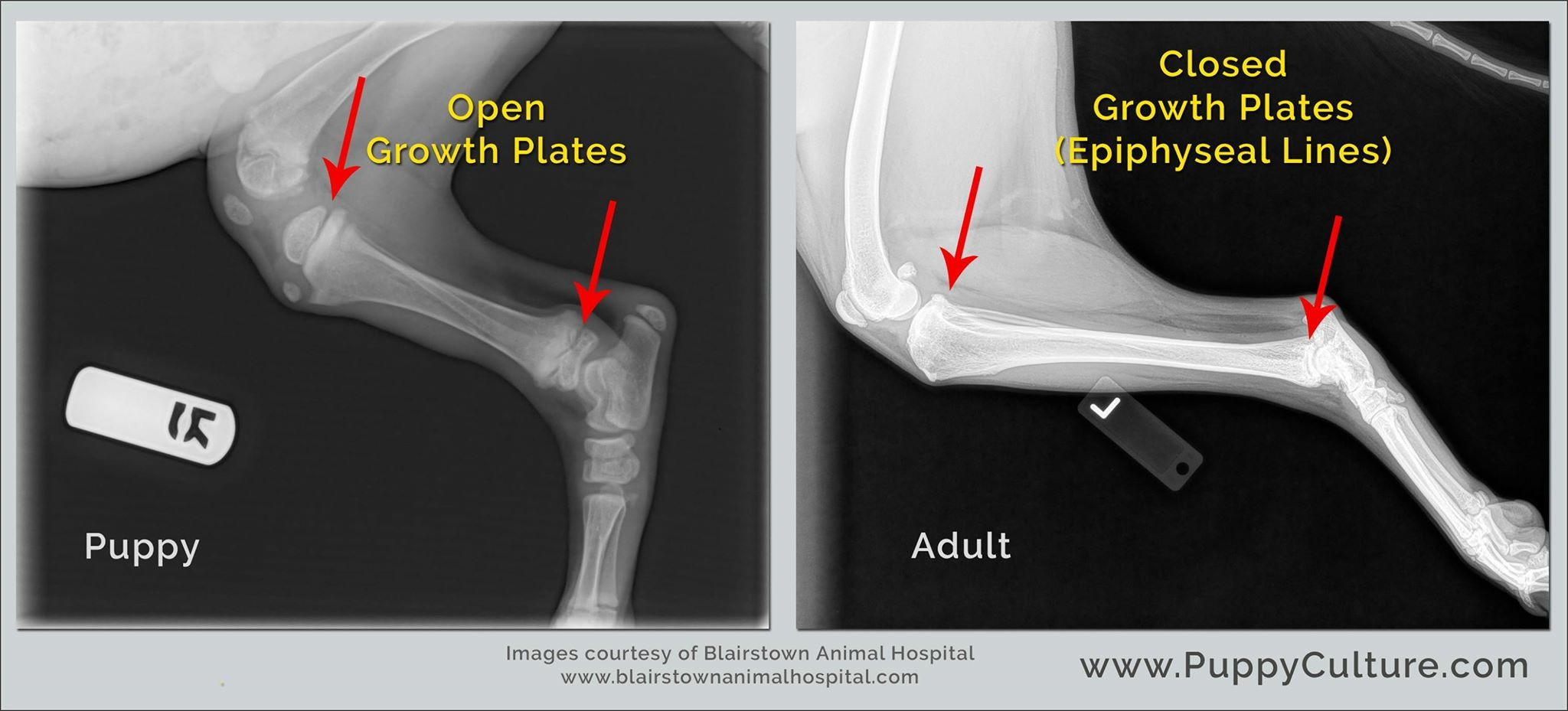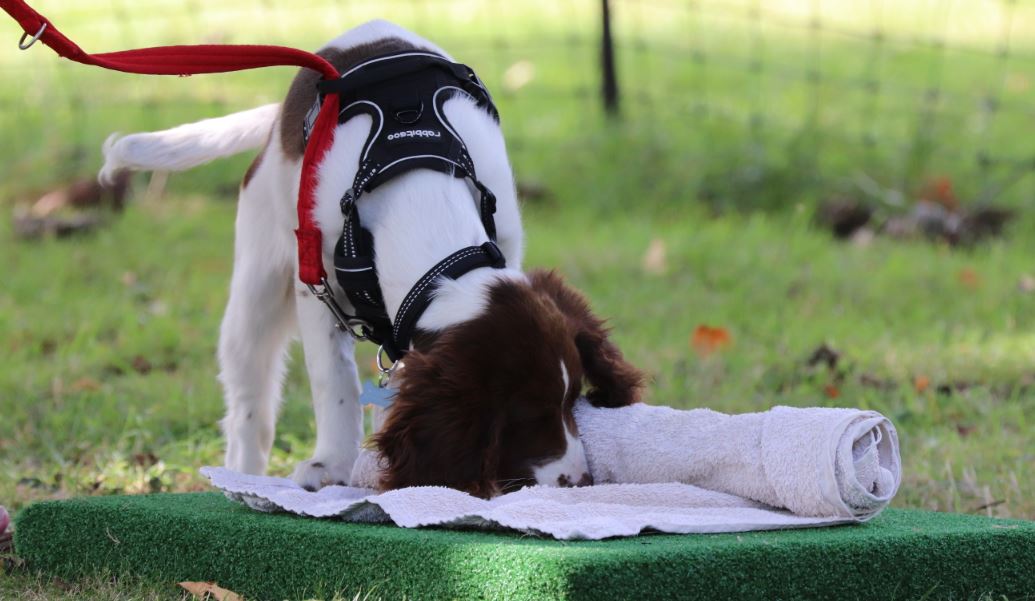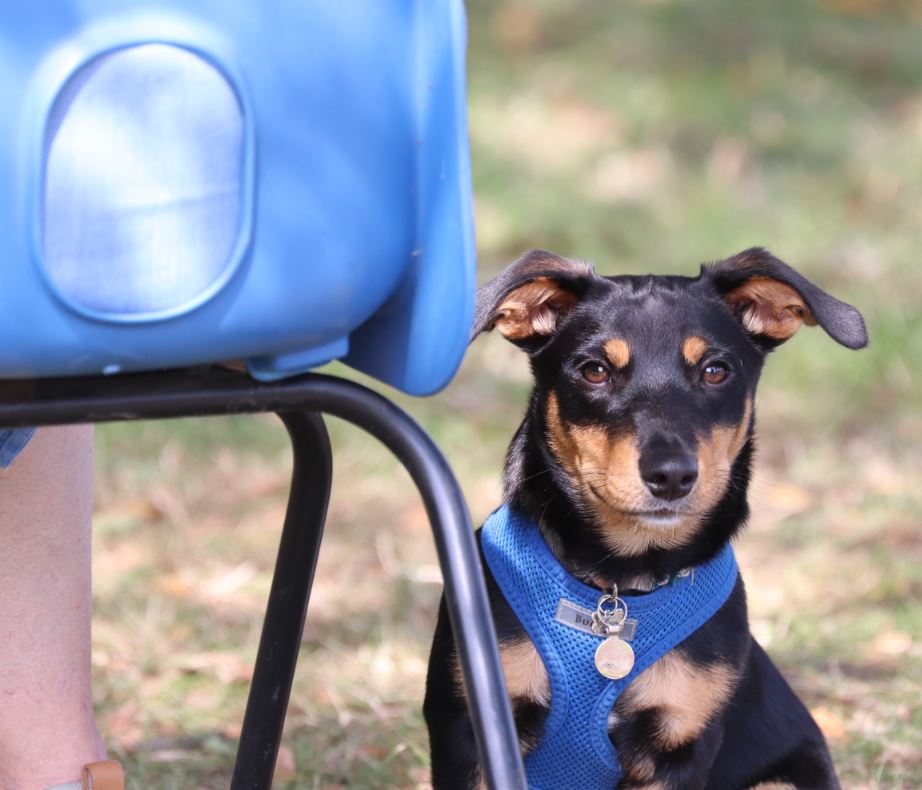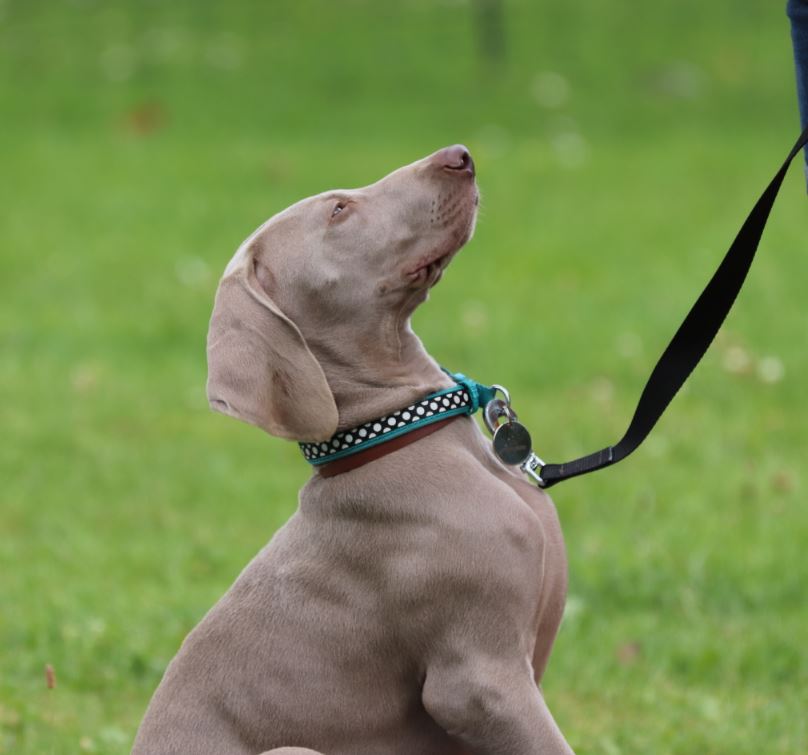This is a question I get asked a lot by new puppy owners and it’s a good question but there is a lot of conflicting advice around. My view is that it’s not necessarily only about how long you exercise your puppy, although this is important, but it’s also about the type of exercise you do with your puppy.
Vigorous exercise, jumping and leaping about should be avoided. This is to do with your puppy’s growth plates. Growth Plates are soft areas of developing cartilage tissue found by the ends of the dog's long bones. They are typically made of cartilage when the puppy is born, but gradually they calcify and transform into denser bone as the puppy matures.
The dog's long bones do not develop from the centre outward; instead, growth occurs right by the growth plate at the end of the long bones. As the puppy grows, the growth plates close and harden into solid bone; however, prior to that, the growth plates are vulnerable to being injured and potentially fractured because they are the last portion of the bones to harden.
Growth plates usually start to harden around 8 months of age but some breeds can take much longer. If you are looking to embark on a new activity with your dog, always consult with your vet first.

Photo credit: www.PuppyCulture.com
The general rule of thumb for the length of exercise for puppies is 5 minutes for every month of their age. This means 20 mins for a 16-week-old puppy. However, if this 20 minutes consisted of 15 minutes chasing after a ball, this could be extremely harmful not just physically but also mentally. So I like to advise puppy owners what type of exercise to do with their puppies rather than focus on the length of time.
I know many owners, including myself, want to tire their dogs out because a tired dog is a happy dog, right? Well yes, it’s true but you don’t always have to tire them out physically and for puppies I would advise against it as an overtired puppy from physical excursion can cause overtiredness resulting in excessive biting and mouthing.
So here’s my advice for exercising and stimulating a puppy from 12-14 weeks of age.



Nose games
Puppies love to use their nose for searching and working things out and the good news is you don’t have to spend a fortune on the latest interactive feeding toy. Use your imagination. Hide food under tennis balls in a muffin tray, a rolled-up towel, empty egg boxes or just a cardboard box filled with other safe bits of recycling.
Go on a sniff walk
Take your puppy to a new place and just let them sniff. This could be for 20-30 minutes providing they are not running around. Sniffing will wear your puppy out more than physical exercise.
Do a training walk
Drive your puppy to a quite location and practice all the things you’ve learnt in class: eye contact, sit, down, loose lead walking and a little bit of recall and then pop them in the car again and take them home. 20 – 30 mins again is fine with breaks in between your training sessions. Working your puppy’s brain is another sure fired way to having a relaxed and tired puppy when you get home.
Go for a short walk from home
It’s good to get your puppy used to walking from your house but just don’t go far. Let them sniff, stop and take in the world around them. Take your time, it doesn’t matter if you only get 100 metres down the road before you have to turn around and go back home.
Take your puppy on the road
Take your puppy out and about so they get to have lots of positive experiences in new places, just be careful not to overwhelm them. Take a toy, chew and some treats with you and just sit with your puppy somewhere and let them observe and watch new things from a distance, rewarding them for being calm. Sit outside a quiet café or pub and give them a chew. You could be out with your puppy for an hour as long as only 20mins of this hour was doing anything physical.
Play with your puppy
Play is a great way to bond with your new puppy and it will also give them an outlet for their high energy levels. Use a long tug toy and get your puppy interested in the toy by making it move along the ground. Keep the movement slow and low to the ground so your puppy doesn’t have to run and jump to get the toy. Once they have hold of it you can engage in a gentle game of tug. Again, keep your movements slow and not vigorous, you don’t want to get your puppy too excited, if this happens then stop play for a while, wait for puppy to calm down and then start again. Keep play sessions short and always swap toy for a treat when you want to end play.
Play ‘find it’
Hide some tasty treats around the house or in the garden and let your puppy go find them. You could use a toy instead. Make it easy for them at first and gradually increase the difficulty.
Hopefully that’s given you ideas on what activities you can do with your puppies. Remember every puppy is different and some may need more stimulation than others. Make sure your puppy gets plenty of rest during the day – puppies need at least 17 hours of sleep a day.
For more advice or information please get in touch:
[email protected]